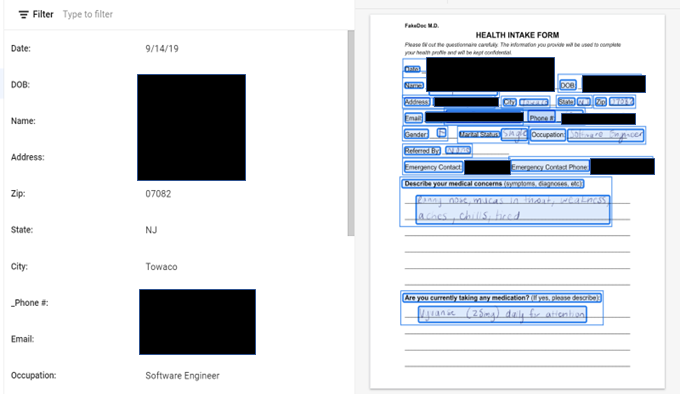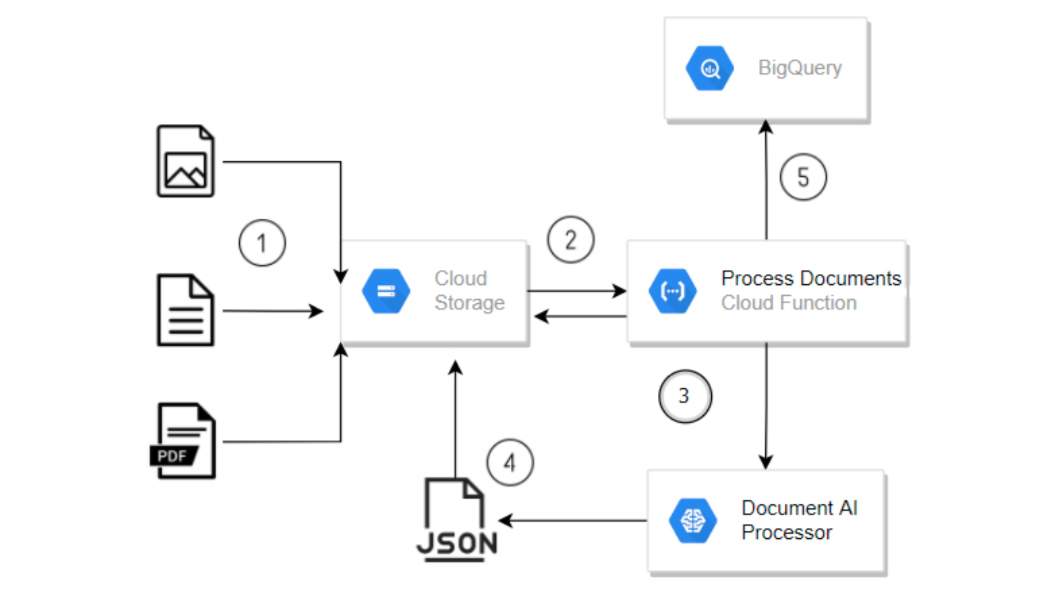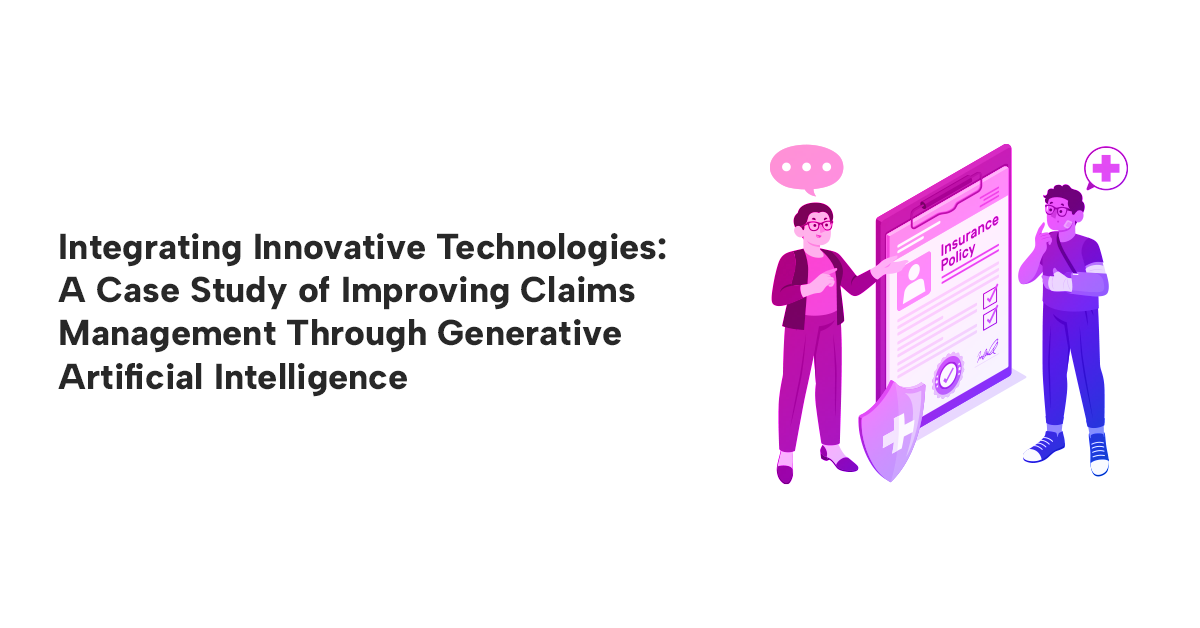Integrating Innovative Technologies: A Case Study of Improving Claims Management Through Generative Artificial Intelligence
Oct 11,2023
Large Enterprise Healthcare Institution
Scope
The primary aim of this project was to streamline the health intake form processes by automating them. Historically, administrative staff had manually processed and entered these forms into the system. The introduction of Generative Artificial Intelligence (GenAI) facilitated the automation of health intake form entry, creating an automated pipeline capable of interpreting handwritten content.
Introduction
Machine learning tools, particularly in Optical Character Recognition (OCR), have showcased exceptional performance. Within this project, OCR tools assumed a pivotal role in recognizing and comprehending the structural elements and handwritten sections of health intake forms. This case study provides an in-depth exploration of the effective integration of state-of-the-art technologies at a large Healthcare institution with an annual revenue of around 3.5 billion USD. It elucidates the hurdles confronted during the integration phase and the ingenious solutions devised to surmount these challenges.

Challenges
Document recognition in healthcare settings presents a series of formidable challenges. First among these is the heavy reliance on manual data entry, which is time-consuming and prone to errors, putting patient care and administrative efficiency at risk. The second major challenge is the wide variability in document formats, spanning handwritten notes to typed reports. This diversity complicates standardizing data extraction methods, making it imperative to find ways to streamline the process for greater accuracy and efficiency.
Additionally, compliance with stringent regulations like the Health Insurance Portability and Accountability Act (HIPAA) is critical for healthcare institutions. Safeguarding sensitive patient information is paramount, and any lapse in compliance or data security can lead to severe legal consequences and erode patient trust. Furthermore, staff's inability to decipher handwritten content on medical documents compounds these challenges, underscoring the need for innovative and robust solutions to ensure efficient and secure document recognition in healthcare settings.
Technology Solutions
Our solution involved the implementation of Google Cloud Document AI. Google Cloud Document AI is a cutting-edge document processing service that leverages the power of artificial intelligence to streamline and automate document management tasks. With Document AI, our client was able to efficiently extract valuable insights and data from a wide range of documents, including invoices, contracts, forms, and handwritten notes. This transformative platform combines Optical Character Recognition (OCR) with natural language processing, enabling it to recognize and comprehend structured and unstructured data, making it highly versatile.
Implementation Strategy
We implemented a comprehensive solution to tackle the previously outlined challenges, as illustrated in the accompanying diagram. Central to our challenges was the wide-ranging diversity of incoming documents, spanning image files, PDFs, and text files. To manage this document variability and maintain data integrity, we adopted Google Cloud's secure Cloud Storage as our primary repository. The process was initiated by activating a Cloud Function, a serverless compute service tasked with the crucial role of initial document ingestion and preprocessing. This phase was essential for standardizing and optimizing documents for subsequent analysis.
Once the documents were appropriately preprocessed, they were seamlessly transitioned to Google Cloud's Document AI, a key player in the Optical Character Recognition (OCR) domain. Document AI's robust capabilities in extracting structured and unstructured data from documents made it ideal for decoding diverse document formats. The OCR results were organized and stored in a structured JSON format, ensuring easy retrieval and archival in the secure Cloud Storage. Subsequently, data augmentation techniques were applied to enhance data completeness and quality. This process involved extracting additional contextual information from the documents, creating a more comprehensive and structured dataset. The augmented dataset, enriched with valuable insights, was securely housed in Google BigQuery, the final repository. This end-to-end document processing workflow adeptly met the challenges posed by diverse document formats, ensuring document security and effectively leveraging OCR and data augmentation for structured data storage and advanced analytics.

Results and Impact
Prior to the implementation of GenAI and Google Cloud Document AI, the manual processing of health intake forms took an average of 10 minutes per form. After automation, this processing time was reduced to just 2 minutes per form (only for quality assurance). This represents an efficiency gain of 80%.
Lessons Learned
Our journey in integrating GenAI to enhance claims management processes for our client in healthcare has provided valuable lessons. First and foremost, we've learned that embracing innovative technologies like Google Cloud Document AI is essential for driving efficiency and accuracy in healthcare document management. The significance of shifting from manual data entry to automated systems cannot be overstated, given its potential to eliminate errors, improve patient care, and enhance administrative processes.
Furthermore, the challenges related to document variability and compliance necessitate robust solutions. The adoption of Document AI demonstrated the power of artificial intelligence in addressing these challenges effectively. It allowed us to overcome the hurdles posed by the wide range of document formats while ensuring HIPAA compliance and safeguarding sensitive patient data. The ability to process both structured and unstructured data has proven to be a game changer in healthcare.
Conclusion
In conclusion, the successful integration of GenAI and Google Cloud Document AI at a large Healthcare institution has demonstrated the transformative potential of innovative technologies in healthcare claims management. By automating the intake form processes, we've alleviated the challenges posed by manual data entry, resulting in increased accuracy and efficiency, ultimately benefiting both patients and healthcare administrators.
The project has illuminated the crucial role of artificial intelligence—particularly in the domain of Optical Character Recognition—in enhancing document recognition. Document AI's ability to handle diverse document formats and its capacity to process both structured and unstructured data have been instrumental in surmounting the challenges related to document variability and compliance.
Our implementation strategy—from Cloud Storage to Document AI and finally to data augmentation in Google BigQuery—has provided a holistic solution to document recognition and management in the healthcare sector. This approach has streamlined processes, fortified data security, and improved data quality.
As healthcare continues to advance, the lessons learned from this case study underscore the significance of innovation and the potential for technology to revolutionize claims management and document recognition, ultimately leading to improved patient care and administrative efficiency in the healthcare sector.




